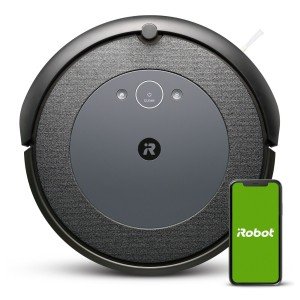The Evolution of Robot Hoovers: Revolutionizing Home Cleaning
Robot hoovers, also known as robotic vacuum, have changed how people approach family cleaning jobs. Initially introduced in the late 1990s, these self-governing machines have actually developed quickly due to improvements in technology, artificial intelligence, and machine knowing. Today, they are geared up with an array of features that make them highly efficient in preserving tidiness in living spaces. This post explores the history, operating, benefits, and future of robot hoovers.
The History of Robot Hoovers
The principle of robotic vacuums dates back to the 1970s, however it wasn't till the launch of the Roomba by iRobot in 2002 that they gained traditional attention. The Roomba was created to immediately navigate various surfaces, avoiding obstacles while efficiently cleaning floors. Ever since, several considerable developments have occurred, including:
| Year | Advancement |
|---|---|
| 1996 | First model robotic vacuum established by a Japanese company. |
| 2002 | iRobot releases the Roomba, mass popularizing robotic vacuums. |
| 2004 | Intro of the very first Roomba with a dirt detection sensing unit. |
| 2011 | Launch of designs with wireless capabilities and smart device integration. |
| 2020 | Advanced designs including AI, enhanced navigation systems, and mopping abilities. |
How Robot Hoovers Work
Robot hoovers run on a mix of sensing units, cams, and algorithms that enable them to tidy effectively. Key parts of these devices include:
Sensors:
- Obstacle Avoidance Sensors: Detect walls, furniture, and even stairs, preventing crashes and falls.
- Dirt Detection Sensors: Identify locations that require more comprehensive cleaning.
Navigation:
- Gyroscopes: Help determine the robot's orientation and motion.
- Electronic cameras and Lidar: Enable mapping of the home environment to create ideal cleaning courses.
Cleaning Mechanisms:
- Vacuum Motors: Generate suction to choose up dirt and particles.
- Brush Rollers: Agitate dirt out of carpets for deeper cleaning.
Power Supply:
- Batteries: Rechargeable lithium-ion batteries supply the essential power for extended cleaning cycles.
Interface:
- Mobile Apps and Smart Home Integration: Users can schedule cleansings, monitor efficiency, and manage the robot remotely.
Benefits of Robot Hoovers
Robot hoovers offer numerous advantages, making them an enticing option for contemporary households:
- Time-Saving: Automated cleaning enables users to focus on other tasks while the robot effectively cleans up floors.
- Convenience: Many designs can be arranged for cleaning sessions, ensuring that homes remain neat without manual effort.
- Availability: Ideal for individuals with mobility obstacles or hectic way of lives, allowing easier home upkeep.
- Constant Cleaning: Regular, automated cleansings reduce the accumulation of dirt and allergens, adding to a healthier living environment.
- Smart Technology: Integration with smart home systems enables increased control and modification.
Limitations of Robot Hoovers
Regardless of their benefits, robot hoovers come with particular constraints:
- Navigation Challenges: They may have a hard time in messy spaces or with particular floor types such as high-pile carpets.
- Battery Life: Most designs need regular charging, which can restrict cleaning duration.
- Upkeep: Regular cleaning of filters, brushes, and emptying dust bins is essential for ideal performance.
- Price: Advanced designs can be expensive compared to traditional vacuum cleaners.
The Future of Robot Hoovers
As innovation continues to develop, the future of robot hoovers looks appealing. Prepared for developments include:
- Improved AI: Enhanced algorithms will enable for much better object recognition and vibrant mapping of areas.
- Hybrid Models: Integration of vacuuming and mopping capabilities in one device will supply a comprehensive cleaning option.
- Increased Autonomy: Future designs may navigate even the most intricate environments without human intervention.
- Sustainability: Battery innovation advancements will result in longer-lasting, more energy-efficient robots.
Frequently Asked Questions (FAQs)
1. Are robot automatic vacuum cleaner for animal hair elimination?
Yes, numerous robot hoovers are particularly developed to tackle family pet hair with powerful suction and specialized brushes that reduce tangling.
2. How do robot hoovers browse around furnishings?
Robot hoovers utilize a combination of sensors and electronic cameras to detect barriers, enabling them to browse around furnishings and prevent collisions.
3. Can robot hoovers tidy carpets?
The majority of contemporary robot hoovers are effective on both tough floorings and carpets. It is advisable to examine the requirements of specific designs for particular performance.
4. Do robot hoovers require programs?
Lots of robot hoovers come with user-friendly apps that allow owners to set schedules and tailor cleaning preferences, making programming uncomplicated.
5. How much do robot hoovers cost?
Prices for robot hoovers differ commonly, ranging from ₤ 200 to around ₤ 1,500, depending upon features and brand.
Robot hoovers have come a long way given that their creation, providing an effective and practical cleaning service for modern homes. Their increasing ability and intelligence make them a practical option for people aiming to streamline their cleaning regimens. As best affordable robot vacuum continues to advance, robot hoovers will likely end up being much more capable, supplying additional features that deal with the evolving requirements of users. Their journey from novelty to need underscores an essential shift in how society approaches home maintenance, marking a considerable turning point in the crossway of technology and every day life.

